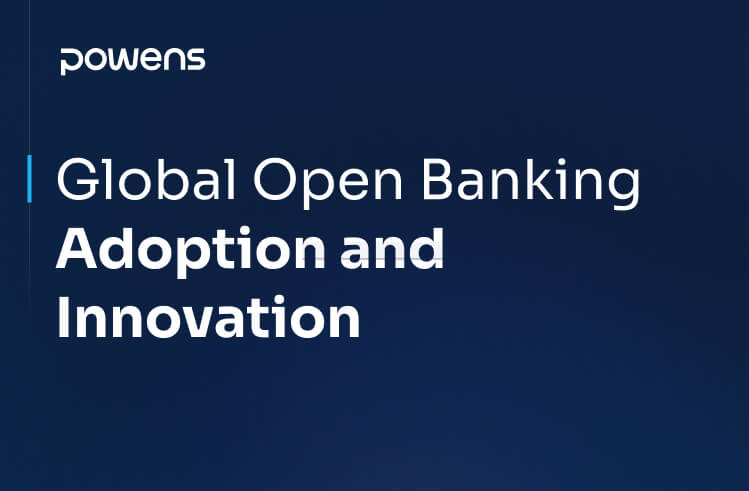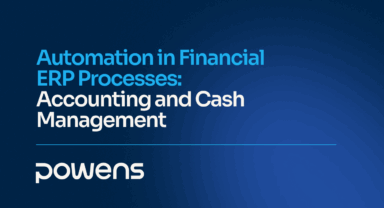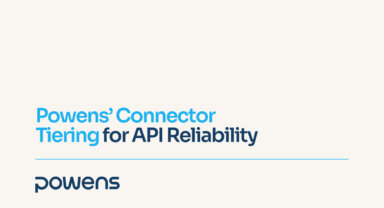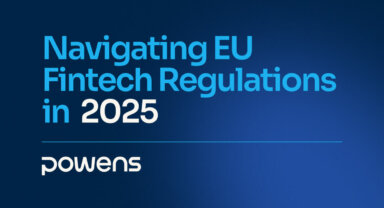A decade ago, the UK kickstarted the Open Banking movement. Now, Open Banking has been rolled out and adopted on all continents –– albeit at different speeds. Regulations like PSD2 (Europe), CDR (Australia), and the Fintech Law (Mexico) have played a pivotal role in influencing how Open Banking is growing in different parts of the world. They’re also setting standards for what consumers expect from financial services, leading to solutions that are more accessible and personal, and give users complete control over their financial data.
In 2024, over 40% of consumers worldwide are expected to adopt Open Banking services, driven by a collective demand for convenient, accessible financial solutions. The market in general is predicted to grow alongside these adoption rates to reach $75.4B by 2028, establishing how important Open Banking is in shaping the future of finance.
Here, we look at the different approaches taken by countries implementing Open Banking and their regulatory frameworks, painting a picture of the widespread impact of Open Banking on a global level.
Global Open Banking by region
Europe (PSD2 and PSD3)
The Payment Services Directive 2 (PSD2), introduced in 2018, is the main regulation driving Open Banking in the European Union. It standardized the secure sharing of financial data across the EU, promoting competition between traditional banks and Fintech companies while enabling new services. PSD2 helped simplify regulations, allowing Fintechs to expand more easily across European markets. It has also been a game-changer for competition, initiating fresh payment and account services. However, its rollout faced some difficulties due to uneven adoption across Member States and growing concerns over data privacy, which affected the smooth Open Banking experience it aimed to deliver.
The Payment Services Directive 3 (PSD3) is now coming into play to deal with these ongoing issues. PSD3 is designed to break down the remaining barriers to Open Banking, giving non-bank providers easier access and creating fairer conditions in the financial sector. It also prioritizes security enhancements, including verification systems like matching IBANs with account names to prevent fraud.
Moreover, PSD3 enhances consumer safeguards by mandating transparency regarding fees and contracts, thereby increasing trust and clarity. These changes are designed to advance Open Banking by fostering competition, security, and innovation within the European financial sector.
-
France
Thanks to its forward-thinking regulatory environment and strong government support, France is a leader in Fintech and Open Banking. Initiatives by the French government that have helped boost the country’s position as an Open Banking hub include:
- French Ministry of Economy, Finance, and Industrial and Digital Sovereignty: Provision of financial and other resources to foster innovation in the industry
- Bpifrance, the French Public Investment Bank: Funding and other support for startups to accelerate their growth
As Open Banking adoption continues to grow in France, both innovative Fintechs and traditional banks are at the forefront. BNP Paribas and Société Générale are leading the way, implementing Open Banking solutions into their services and customer needs. In fact, they’ve been amongst the pioneers, with 29 and 14 Open Banking APIs available to developers respectively since 2020.
France also has a thriving Fintech community supported by the France FinTech Association, a government-backed industry body that provides insights and support to the ecosystem.
-
Spain
Spain was one of the first in Europe to adopt Open Banking, with major banks quickly integrating these services. BBVA, for example, was one of the very first banks in Europe to release commercially available APIs back in 2017. This nationwide head start has put Spain at the forefront of financial technology –– with even more innovative financial services to come.
A big driver of this adoption has been Bizum, Spain’s domestic payment scheme, which had over 25.3 million users by the end of 2023. Bizum’s widespread use has significantly encouraged the growth of Open Banking services in Spain, but the initial delays in PSD2 and ongoing data privacy concerns have held broader adoption back.
The regulatory landscape in Spain has played a strong role in the growth of its Fintech scene. The country offers a regulatory sandbox that serves as a setting for Fintech startups to experiment with and refine financial products while being monitored by key national bodies, such as the Banco de España and the Comisión Nacional del Mercado de Valores (CNMV). With backing from both the banking and Fintech industries, Spain continues to lead the global Fintech landscape and foster Open Banking growth.
-
Italy
Italy has been a bit behind the Open Banking curve compared to some of its European peers. But things are starting to move, especially among the traditional banks. Recent developments indicate that Italy is beginning to embrace the potential of Open Banking –– a recent study showed that by January 2024, around 14% of digitally active banking customers in Italy would be using Open Banking. That’s a steady increase from previous years, despite the initial delay.
A key driver behind this momentum is the partnership between Italian banks and Fintech startups. These alliances are on their way to transforming the financial landscape in Italy by modernizing traditional banking systems and introducing innovative solutions.
-
Nordics
The Nordic nations have positioned themselves as pioneers in digital banking on a global scale thanks to their robust infrastructure and consumer readiness for Open Banking. Sweden and Denmark lead the pack with populations and regulatory frameworks facilitating innovation. Sweden, in particular, notorious for its push to become the world’s first cashless economy, has been crowned as just one of three pioneers in Open Banking regulatory and API adoption from the very beginning, as per the World Payments Report 2018. This prowess is evident in their sophisticated digital systems and widespread use of Open Banking services throughout the region.
Denmark ranks as the most innovative EU Member State, closely followed by Sweden, with both countries recognized for their high digital maturity. This solid technological groundwork has empowered the Nordic countries to uphold their dominance in Open Banking, encouraging ongoing progress and creativity within the financial services industry.
-
UK
The UK is the de facto birthplace of Europe’s Open Banking movement. Ever since, it has been a key driving force in paving the way for Open Banking’s global development. The introduction of Open Banking Limited (formerly the OBIE) in 2016 established the rules and protocols needed to promote Open Banking adoption nationwide. And just a few years later, by 2019, virtually all the country’s major banks had already rolled out Open Banking APIs. The OBIE helped to define a system that enables third-party providers to access financial information securely, which boosts competition and innovation across the industry.
As of January 2024, approximately 1 in 7 (13%) digitally active UK consumers use Open Banking services. This marks a significant increase compared to previous years, positioning the UK ahead of many other European nations where Open Banking uptake is considerably lower. Furthermore, the volume of Open Banking payments in the UK experienced a remarkable 69% growth year on year, reaching an all-time high of 14.5 million payments in January 2024. These statistics highlight the UK’s continued leadership in the Open Banking arena, supported by a regulatory framework and a strong focus on innovation.
Latin America
The rapid growth of Open Banking in Latin America is primarily driven by the need to include a large portion of the population that remains unbanked or underbanked. As these individuals and businesses seek access to financial services, the region’s Fintech sector is evolving swiftly to meet this demand. Brazil and Mexico are at the head of this movement, introducing regulatory frameworks to encourage innovation while safeguarding consumer interests. But despite these advancements, there are still challenges to overcome, such as infrastructure hurdles, inconsistent standards among countries, and security concerns. These obstacles hinder smooth integration, complicating cross-border transactions and impeding wider adoption of Open Banking practices.
Overcoming the intricacies of merging diverse financial systems is crucial to unlocking the true potential of Open Banking throughout the region –– which, with a total population of over 650 million people, is a huge market.
-
Mexico
Mexico’s approach to regulations has resulted in impressive Fintech growth. The Fintech Law (introduced in 2018, just two years after the UK and in the same year as the EU equivalent, PSD2) was a pioneering regulation in Latin America. It helped Mexico’s Fintech sector grow and made investment in the area exciting. This forward-thinking framework has been fundamental in promoting financial accessibility and creativity, positioning Mexico as a frontrunner in Latin America’s Open Banking scene.
-
Brazil
Brazil has established an Open Banking system among the most sophisticated in the region, driving substantial advancements in the financial industry. As per August 2024, Brazil’s Open Finance framework documented over 50 million active permissions for data sharing. This widespread adoption extends beyond traditional banking services, encompassing data sharing across various financial products like investments, insurance, and foreign exchange.
-
Colombia
Colombia is making strides in its Open Banking initiatives, showing promise for future growth. The country is taking a voluntary approach to Open Banking by allowing institutions to adopt it at their own pace based on their readiness. This strategy, along with robust data protection regulations, lays a strong groundwork for Open Banking in the country. By the end of 2023, access to financial accounts at banks and Fintechs in Colombia saw a significant boost, reflecting the increasing embrace of digital financial services.
The regulatory landscape is adapting to facilitate this shift, namely by creating an environment that promotes innovation in the industry. The anticipated advantages of implementing Open Banking in Colombia include enhanced customer experiences, streamlined usability, and opportunities for new entrants to join the market.
Asia
The regulatory scene for Open Banking in Asia varies, with different countries having their own rules based on their economic conditions and regulatory views. In Singapore and Malaysia, two of the continent’s leaders, the market drives their approach to Open Banking. Governments have encouraged adoption through guidelines and initiatives, for example, instead of enforcing mandatory regulations. This gives institutions the freedom to innovate and partner with Fintechs at their own speed, creating a flexible and vibrant financial ecosystem. On the other hand, Hong Kong’s approach is more stringent, driven by regulators that mandate institutions to establish open APIs and uphold consumer data rights.
The impact of Open Banking on promoting inclusion in Asia is noteworthy, especially in Southeast Asia, where many people are still without banking services. Studies suggest 225 million individuals in Southeast Asia do not have bank accounts and approximately 350 million lack access to traditional credit. Open Banking adoption can bridge this gap by offering more accessible and affordable financial services, especially in remote and underserved areas. This promise is driving increased regulatory backing and market-driven efforts throughout the region.
Australia
Australia stands out as a pioneer in Open Banking advancements, largely thanks to its Consumer Data Rights (CDR) framework, rolled out in 2017. The CDR system was established to empower consumers with greater control over their data, allowing them to share their financial details safely with authorized third parties. This move not only enhances consumer safeguards but also fosters innovation by enabling the development of new tailored services.
The CDR framework requires the use of APIs and establishes strict guidelines for data sharing. This has positioned Australia as a model for other nations aiming to implement similar systems. By promoting competition within the financial services industry and upholding rigorous standards for data security and privacy, Australia has emerged as a global Open Banking leader. The success of this framework has led to its adoption beyond the banking sector, further cementing Australia’s status as a trailblazer in data rights and financial innovation.
The future and global impact of Open Banking
Open Banking is changing how financial services work across the globe. Europe, the UK, and Australia are leading this shift with robust regulations and creative strategies.
In Latin America and Asia, the push for Open Banking is driven by the goal of inclusion, with Brazil, Mexico, and Singapore spearheading regional initiatives. However, challenges persist, particularly in areas with regulations or outdated financial systems. The varying levels of infrastructure and regulatory readiness result in differing adoption rates worldwide –– presenting both opportunities and obstacles for banks and Fintech companies.
Looking ahead, leaders and decision-makers need to understand that the future of Open Banking extends beyond merely following regulations. It’s about using technologies like AI and blockchain to stay competitive. These advancements can enhance the Open Banking system by strengthening data security, offering personalized financial services, and streamlining operations. As these technologies evolve, they could help tackle existing challenges and drive innovation and adoption in the Open Banking industry worldwide.
While progress has been made, there is still work to be done to fully realize the Open Banking ecosystem. Ongoing collaboration among regulators, financial institutions, and technology providers will be crucial in overcoming obstacles and unlocking the potential of Open Banking globally.
How to get started with Open Banking with Powens
At Powens, we’re proud to enable financial institutions, Fintechs, and software vendors across Europe and LATAM to create innovative products and streamline their financial operations with the only platform that integrates Open Finance and Embedded Banking.
Our Open Banking Platform empowers more than 280 leading financial institutions and 7 million end-users with comprehensive embedded, frictionless, and fully automated banking and payment experiences.

 Apr 17, 2024
Apr 17, 2024 














